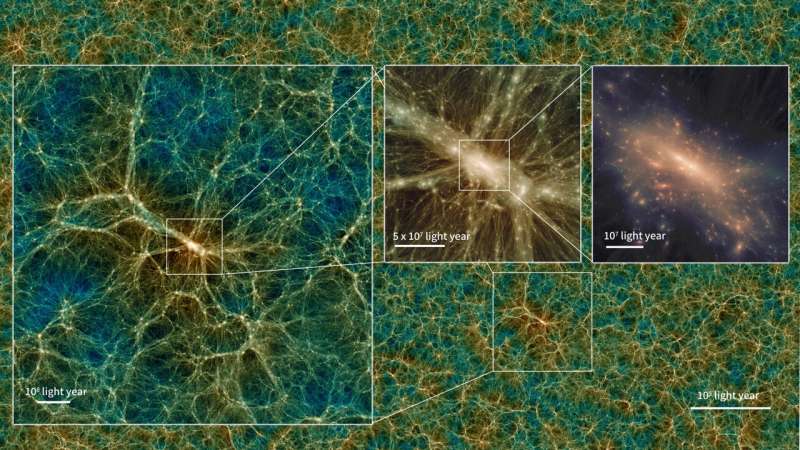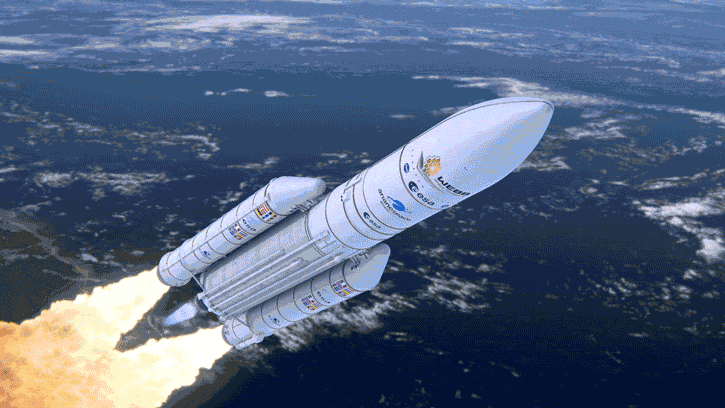
Copernical Team
CuPID CubeSat will get new perspective on Sun-Earth boundary
 When you help build a satellite the size of a shoebox, you learn pretty much everything about it, says Emil Atz, a PhD candidate in Mechanical Engineering at Boston University. You learn how to write a proposal to fund it, how to place the screws that hold it together, how to test each instrument to ensure it functions properly.
And then you learn how to say goodbye.
"It's a scary fe
When you help build a satellite the size of a shoebox, you learn pretty much everything about it, says Emil Atz, a PhD candidate in Mechanical Engineering at Boston University. You learn how to write a proposal to fund it, how to place the screws that hold it together, how to test each instrument to ensure it functions properly.
And then you learn how to say goodbye.
"It's a scary fe Antennas searching for ET threatened by wildfire
 The Allen Telescope Array, an ensemble of 42 antennas used in the search for extraterrestrial intelligence (SETI), is once again threatened by wildfires. The scientists and engineers normally on-site have been evacuated as a precautionary measure, and in response to an order from the Shasta County Sheriff's Office.
The Dixie Fire, which is currently approximately 12 miles south of the Arra
The Allen Telescope Array, an ensemble of 42 antennas used in the search for extraterrestrial intelligence (SETI), is once again threatened by wildfires. The scientists and engineers normally on-site have been evacuated as a precautionary measure, and in response to an order from the Shasta County Sheriff's Office.
The Dixie Fire, which is currently approximately 12 miles south of the Arra NASA's Perseverance rover collects puzzle pieces of Mars' history
 NASA's Perseverance Mars rover successfully collected its first pair of rock samples, and scientists already are gaining new insights into the region. After collecting its first sample, named "Montdenier," Sept. 6, the team collected a second, "Montagnac," from the same rock Sept. 8.
Analysis of the rocks from which the Montdenier and Montagnac samples were taken and from the rover's previ
NASA's Perseverance Mars rover successfully collected its first pair of rock samples, and scientists already are gaining new insights into the region. After collecting its first sample, named "Montdenier," Sept. 6, the team collected a second, "Montagnac," from the same rock Sept. 8.
Analysis of the rocks from which the Montdenier and Montagnac samples were taken and from the rover's previ Largest virtual universe free for anyone to explore

Forget about online games that promise you a "whole world" to explore. An international team of researchers has generated an entire virtual universe, and made it freely available on the cloud to everyone.
Uchuu (meaning "outer space" in Japanese) is the largest and most realistic simulation of the universe to date. The Uchuu simulation consists of 2.1 trillion particles in a computational cube an unprecedented 9.63 billion light-years to a side. For comparison, that's about three-quarters the distance between Earth and the most distant observed galaxies.
Week in images: 6 - 10 September 2021

Week in images: 6 - 10 September 2021
Discover our week through the lens
Webb flies Ariane animation
 Image:
Image:
Artist's animation of the James Webb Space Telescope (Webb), folded in the Ariane 5 rocket during launch from Europe's Spaceport in French Guiana.
Webb is the next great space science observatory, designed to answer outstanding questions about the Universe and to make breakthrough discoveries in all fields of astronomy. Webb will see farther into our origins – from the formation of stars and planets, to the birth of the first galaxies in the early Universe.
Working with partners, ESA was responsible for the development and qualification of Ariane 5 adaptations for the Webb mission and for the procurement
China releases first batch of gamma photon data from dark matter explorer
 China has released the first batch of gamma photon data obtained by the Dark Matter Particle Explorer (DAMPE), according to Science and Technology Daily on Wednesday.
The National Space Science Data Center (NSSDC) and the Purple Mountain Observatory (PMO) of the Chinese Academy of Sciences Tuesday released the scientific data collected by the DAMPE, also known as Wukong or Monkey King.
China has released the first batch of gamma photon data obtained by the Dark Matter Particle Explorer (DAMPE), according to Science and Technology Daily on Wednesday.
The National Space Science Data Center (NSSDC) and the Purple Mountain Observatory (PMO) of the Chinese Academy of Sciences Tuesday released the scientific data collected by the DAMPE, also known as Wukong or Monkey King. NASA Mars mission begins a new chapter of science with a new leader
 Dr. Shannon Curry, planetary scientist and the deputy assistant director of planetary science at the Space Sciences Laboratory (SSL) at the University of California, Berkeley, has assumed leadership of NASA's first mission devoted to studying the Martian atmosphere. On Aug. 31, Curry started her new job as Principal Investigator of NASA's Mars Atmosphere and Volatile EvolutioN, or MAVEN, mission
Dr. Shannon Curry, planetary scientist and the deputy assistant director of planetary science at the Space Sciences Laboratory (SSL) at the University of California, Berkeley, has assumed leadership of NASA's first mission devoted to studying the Martian atmosphere. On Aug. 31, Curry started her new job as Principal Investigator of NASA's Mars Atmosphere and Volatile EvolutioN, or MAVEN, mission German ESA astronaut Matthias Maurer is ready for his first ISS mission - 'Cosmic Kiss'
 At the end of October 2021, the German ESA astronaut Matthias Maurer, together with the NASA astronauts Raja Chari, Thomas H. Marshburn and Kayla Barron, are expected to launch to the International Space Station (ISS) on board a Dragon space capsule from the US company SpaceX. Maurer will spend approximately six months in microgravity and return to Earth in April 2022.
This will be the fir
At the end of October 2021, the German ESA astronaut Matthias Maurer, together with the NASA astronauts Raja Chari, Thomas H. Marshburn and Kayla Barron, are expected to launch to the International Space Station (ISS) on board a Dragon space capsule from the US company SpaceX. Maurer will spend approximately six months in microgravity and return to Earth in April 2022.
This will be the fir Smoke alarm, burning smell disrupt crew on International Space Station
 Russian cosmonauts woke up to an emergency alarm Thursday in one of their service modules at the International Space Station.
Audio from NASA's television feed caught a French astronaut identifying a smell of burning plastic, according to Radio Free Europe/Radio Liberty.
Russian space agency Roscosmos told state news agency TASS that the cosmonauts turned on an air purification s
Russian cosmonauts woke up to an emergency alarm Thursday in one of their service modules at the International Space Station.
Audio from NASA's television feed caught a French astronaut identifying a smell of burning plastic, according to Radio Free Europe/Radio Liberty.
Russian space agency Roscosmos told state news agency TASS that the cosmonauts turned on an air purification s 